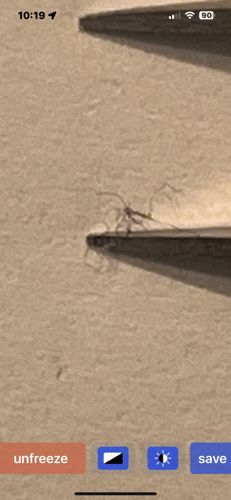Crane Fly
Scientific Name: Tipulidae (Family)
Order & Family: Order Diptera, Family Tipulidae
Size: Body length typically 1/4 inch to 2.5 inches (0.6 cm to 6.3 cm), with some species having leg spans much larger.

Natural Habitat
Moist environments with abundant vegetation, including fields, forests, wetlands, and near water bodies. Adults are often seen around lights at night, and indoors if attracted.
Diet & Feeding
Adult crane flies generally feed on nectar or decaying plant matter, or do not feed at all. Larvae (known as 'leatherjackets') are detritivores, feeding on decaying organic matter, roots, and sometimes small invertebrates.
Behavior Patterns
Adults are typically weak, clumsy fliers, often attracted to lights. They are short-lived. Larvae live in soil or aquatic environments and are active feeders.
Risks & Benefits
Crane flies are largely harmless to humans. They do not bite or sting. Larvae can occasionally be pests in lawns or crops by feeding on roots, but this is usually minor. Adults serve as a food source for other animals (birds, bats, spiders) and play a role in decomposition.
Identified on: 10/7/2025